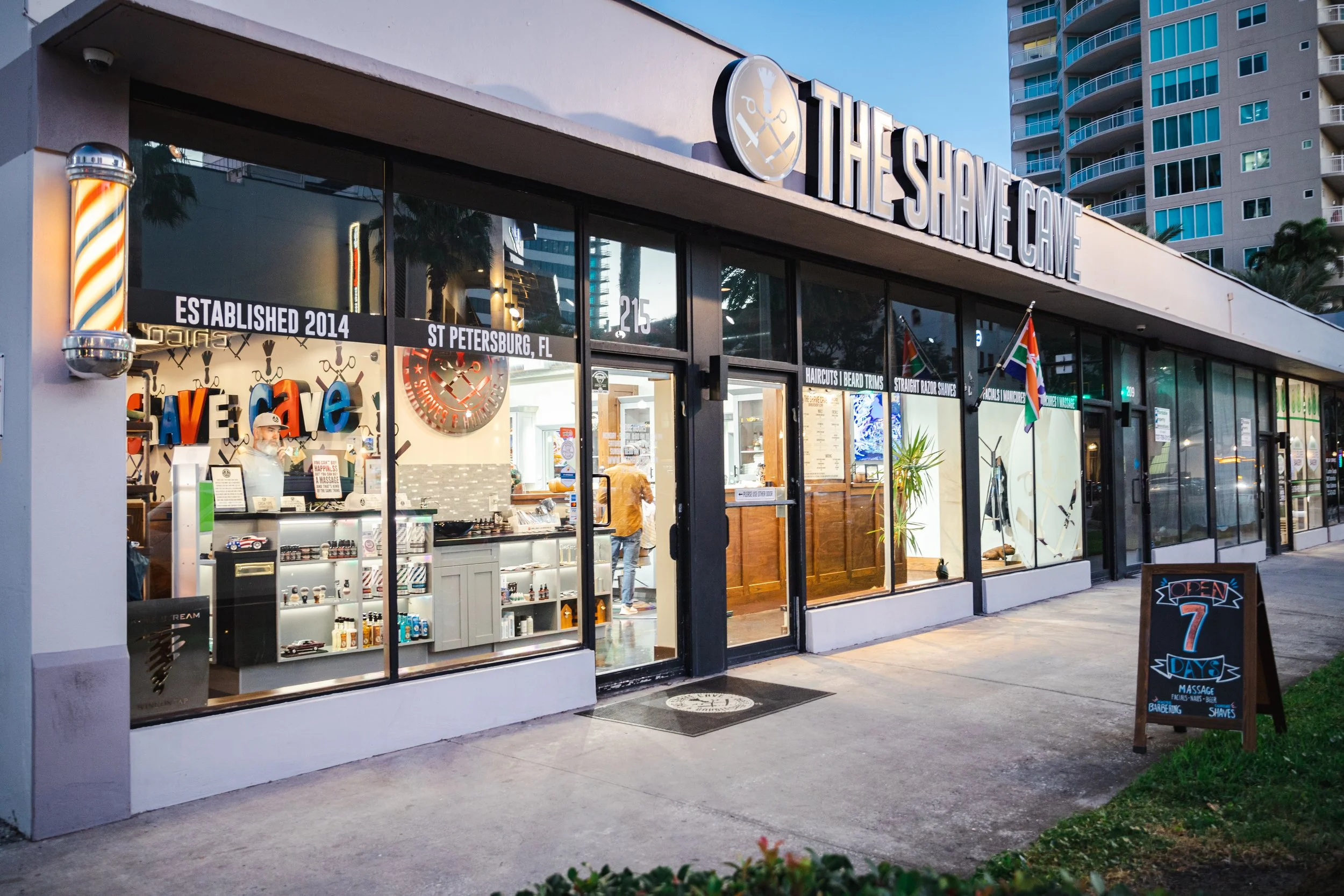The Fascinating History of the Barber Shop Pole
One of the defining characteristics of a barber shop is the iconic pole standing just outside the establishment. Whenever you see it, you immediately know you're passing by a barber shop. However, many people are unaware of the rich history and significance behind this symbol. As the owner of The Shave Cave, an upscale barber shop in Downtown St. Petersburg and a hub for the modern man, I'm excited to share with you the rich and intriguing history behind one of the most iconic symbols in the barbering world: the barber shop pole. While many recognize the red, white, and blue stripes as a marker of a barber shop, few know the deep historical roots of this emblem. In this post, we're going to dive into the fascinating story of the barber shop pole and uncover its true meaning.
> The barber pole is believed to have originated in ancient Greece and Rome, where barbers not only cut hair but also performed surgery and dentistry.
> The blue stripe on the barber pole was added later in some countries, representing the veins cut during bloodletting.
> The colors of the barber pole can vary by country. In America, red, white, and blue are common, while in other countries, it might only be red and white.
> The rotating barber pole, often seen today, was introduced to create a spiraling effect, symbolizing the bandages used in bloodletting.
The barber pole stands as a nostalgic and iconic symbol of barber shops, harkening back to a time when barbers were also surgeons. While the services provided have evolved, the historic and cultural significance of the barber pole remains deeply ingrained in the tradition of barbering. At The Shave Cave, we proudly honor this tradition, providing top-notch grooming services in a setting that respects the history and art of barbering.
1. Barber-Surgeons in Medieval Times
In medieval Europe, barbers were more than just hair cutters; they were known as barber-surgeons who performed various medical procedures. These procedures included surgeries, tooth extractions, and bloodletting.
The barber-surgeons used white cloths to wipe blood and red cloths to represent the blood itself during these procedures.
2. Symbolism of the Pole
The barber pole evolved as a visual representation of the services offered by barber-surgeons. The red and white stripes symbolized the bloody and clean bandages used during medical procedures.
The blue stripe was added later, symbolizing the vein cut during bloodletting.
3. Barber-Surgeons Guilds
In the 17th century, barber-surgeons formed guilds to regulate their practices. The barber pole became a symbol displayed outside their shops, indicating the services provided.
These guilds had specific regulations and guidelines for their members, and the pole served as a public sign of a legitimate barber-surgeon establishment.
4. Separation of Barbers and Surgeons
With advancements in medical science, the roles of barbers and surgeons began to separate. Surgeons focused more on medical procedures, while barbers specialized in hair-related services.
Despite this separation, the iconic barber pole remained a symbol of the historical connection between barbers and surgeons.
5. Modern Symbolism
Today, the barber pole retains its symbolic significance, even though its medical associations have faded. It is now a widely recognized emblem for barber shops around the world.
The rotating pole, often powered by an electric motor, signifies the historical connection to bloodletting, with the spiraling stripes representing bandages wrapping around the pole.
In summary, the barber pole is much more than a simple sign for a haircut. Its red, white, and blue stripes tell a story of a time when barbers were also surgeons, performing medical procedures like bloodletting. From its origins with barber-surgeons in medieval times to the formation of guilds and the eventual separation of barbers and surgeons, the barber pole has remained a powerful symbol of the barbering profession's rich history. Today, it continues to be an emblem of tradition and craftsmanship, celebrated in barber shops around the world.
Dive Deeper with The Shave Cave
Interested in learning more about the history of barbering and grooming? Visit The Shave Cave, where tradition meets modernity. Our expert barbers are not only skilled practitioners but also passionate historians, eager to share their knowledge and expertise. Book your appointment today and experience the legacy of the barber shop pole firsthand.
Join the Conversation
Have questions or insights about the barber shop pole and its history? Join the conversation on our social media channels. Share your thoughts, stories, and experiences with us and fellow grooming enthusiasts. Let's celebrate the rich heritage of barbering together.Max






